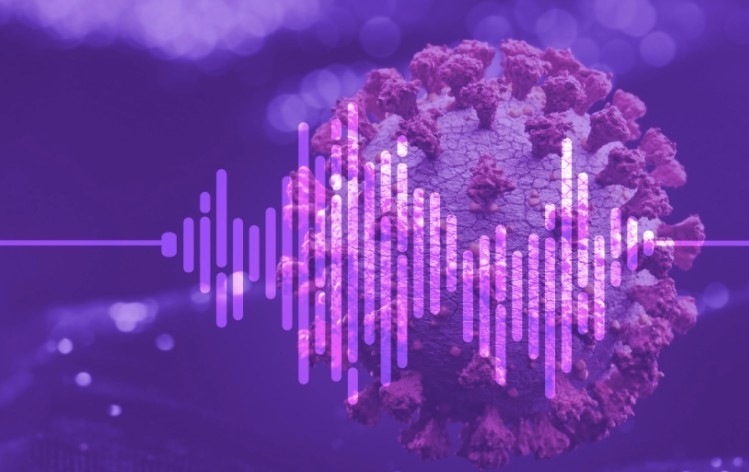


Project supported by FAPESP aims to help triage suspected COVID-19 patients (image: Spira / IME-USP)
Published on 03/19/2021
By Elton Alisson | Agência FAPESP – In addition to body temperature, blood oxygen saturation and heart rate, voice can be used as a parameter for the early identification of patients with suspected COVID-19.
Researchers supported by FAPESP plan to analyze people’s voices with the aim of detecting respiratory failure, one of the main symptoms of the disease. The project is called Spira, a Portuguese-language acronym meaning “system for early detection of respiratory insufficiency by voice analysis”, and is being conducted with support from the general hospital run by the University of São Paulo’s Medical School in the city of São Paulo (Hospital das Clínicas, FM-USP), Brazil.
“The system will analyze the recorded voice of a person speaking into a phone or in front of a computer screen, for example, to detect whether they have a sufficient level of respiratory failure to warrant assessment by a medical team in a hospital emergency room,” Marcelo Finger, a professor at the University of São Paulo’s Institute of Mathematics and Statistics (IME-USP) and principal investigator for the project, told Agência FAPESP.
To develop the system, the researchers wrote software to collect recordings of texts, such as “Love your neighbor to help tackle coronavirus with the strength we need”, read by patients being treated for COVID-19 in Hospital das Clínicas. Artificial intelligence and machine learning via neural networks will be used to compare the recordings with voice samples from people without the disease in search of patterns such as breaths taken, pauses, and other aspects of the way in which a speaker delivers the text.
If it detects respiratory failure, the system will alert the health worker who is monitoring the patient remotely so that the patient or a carer can be advised to go to the ER.
“The system will facilitate triage, especially at a time like this when many health services are overwhelmed,” Finger said.
The researchers will pretrain the system on recordings of speech from all parts of Brazil collected over the past 50 years. It will then be able to determine whether a much smaller selection of voice samples reflects respiratory problems, Finger explained.
“The project will use natural language processing to assist medical diagnosis and is at the knowledge frontier,” he said. “We may not achieve the ideal degree of accuracy to begin with, but we’re also learning, and this will open up a research avenue that could have countless applications.”
A website has been created to invite members of the public to donate voice samples to the project. To date, more than 11.6 thousand people have done so.
Delayed perception
The system will be especially useful in helping to diagnose COVID-19 because the disease progresses very slowly, and obvious symptoms take some time to appear. Most patients only go to a doctor or hospital when it reaches a relatively advanced stage, noted Anna Shafferman, a professor at FM-USP and a co-leader of the project.
Patients who progress to the severe form of the disease often begin to feel worse only about seven days after being infected and deteriorate sharply between the eighth and eleventh day, Shafferman said in an online event held by Jornal da USP.
“When the epidemic began, we wondered why people were taking so long to go to the doctor. We found this was due to a delayed perception of their worsening condition. So the recommendation is that people don’t stay at home waiting until it’s obvious that they have respiratory failure because by then it could be too late,” Shafferman said.
One of the reasons for this delayed perception is that the pulmonary damage is mostly interstitial, so that lung compliance [or elasticity] remains good, giving the patient a false impression that the lungs are working fine, she explained.
“COVID-19 patients very often have oxygen saturation levels in the range of 85-87, which is very low. A system that can identify this kind of respiratory failure by speech analysis will greatly facilitate diagnosis,” she said.
The system will also be useful after the epidemic is over, as respiratory failure is a symptom of other common diseases, such as pneumonia. “Health workers will also be able to use the system to triage patients generally,” Shafferman said.
Source: https://agencia.fapesp.br/33624